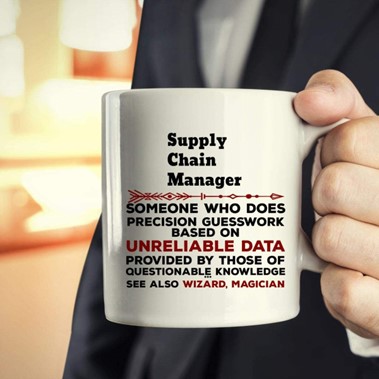Now, before I get to the 3 Things, I must confess, this post is looking at the supply chain world through the lens of the discrete manufacturing industry. While it is a half a trillion-dollar industry in the U.S. alone, it does not account for all supply chain considerations. That said, I believe the 3 things I learned are relevant to any industry if you squint a bit to keep it clear when you look through the lens.
Supplier Collaboration is Still Missing Product Information
There were a lot of presentations and discussions on the importance of improving supplier collaboration, but these almost exclusively focused on contractual onboarding, order fulfillment, logistics, and financial operations. However, very little time was spent on the product development or NPI end of the supplier collaboration spectrum that drives many of the downstream successes and failures by providing early supplier visibility. People in the discrete manufacturing space generally agreed it is a problem worth solving, and two common themes kept coming up:
1) Finding and sharing complete and accurate product information is hard, and
2) Procurement would need to work with engineering to do that.
One anonymous supply chain leader from a life sciences company said, “I’d love to solve this problem because like most companies, we are not great at collaboration with suppliers on product info.” Like most companies?! Well then let’s solve it. It seems that the collaborative spaces between departments is the equivalent of the space under your bed or in your closet when you’re cleaning your room. It’s where problems go to hide where no one can see them. Maybe it’s time to do more with the data you already have?
Artificial Intelligence has replaced Digital Transformation as Top Buzzword
It seems Artificial Intelligence may be replacing Digital Transformation as the most hyped, and possibly overused, buzzwords. Almost every vendor was promising insights from AI. Inventory management is no longer going to be a gamble because AI will tell you where to stock which parts, and how soon to reorder/replenish. You won’t have to guess which supplier is the best choice because AI will predict which supplier can get you high quality parts fastest at the cost you want to pay. You won’t have to put out an RFP with a product spec to qualify a supplier because AI will select the best supplier based on their web search history.
Yes, AI is extremely valuable for precise targeted outcomes when the source data is accurate, but it will always struggle in a world where data is inconsistently formatted and generally incomplete. Today, people still need to actively work together to get things done. Many of these idea sound more like gambling and lottery predictions than real insights based on reliable data. A good place to start looking for real data are the everyday supplier interactions that currently happen in email, chat tools, and meetings. When we put this into a single traced thread you start to have real, actionable, discrete intelligence around your actual process.
People Continue to Get More Specialized in Their Jobs And Need a Better Way to Communicate
As companies have grown, and performance expectations have increased, work specialization has increased with it, leading to productivity gains. This spans all departments, not just the traditionally specialized manufacturing lines. Many supply chain leaders that I spoke to were included in this group. A common theme I heard over and over again was “that’s not my job.” Everyone of course said it more eloquently than that, but that was the message. While this specialization has led to gains for their organization, it has created knowledge gaps between specialties. 
It is generally recognized that there is an opportunity to bridge the small gaps between these specializations, but this requires a common way to work together in the context of each individual’s area of expertise. The problem is magnified when suppliers enter the picture, as they have their own specialization. Since each area seems to have their own unique way of managing and transmitting data there are so many opportunities to get product data wrong. It is like a game of “telephone” where one person tells another person something, who then tells the next person and by the time it gets to the end of the chain the result is invariably different from the way it started.
Imagine being able to see what engineering shared directly with a supplier without any specialized tools or training. Maybe suppliers could ask questions directly to the designer in the context of the drawing? How about procurement being able to see a bill of materials together with 3D parts to visually verify they are receiving the right parts from the supplier? This contextualized collaboration and communication would offer a way to reap the benefits of specialization while stay connected across those lines of expertise without losing fidelity along the way.

